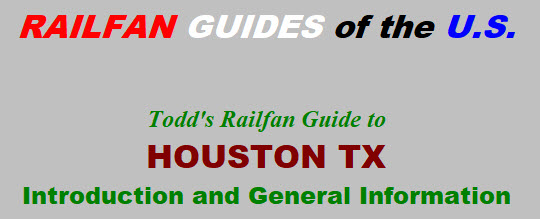
In General
Map
Overview
Tracks Gone
Floobydust

In General
Map
Overview
Tracks Gone
Floobydust
Another great site with info on
railroad structures in all of Texas (listed by county, ie: The city of Tyler is
in Smith county, so don't click on Tyler county) is at :
http://www.rrshs.org/Texas/txrrstruc.htm
My Rosenberg Museum page is here
My Galveston Museum page is here
So far, I have the following detailed areas of Houston:
Map 1 - Englewood Yard
Map 2 - Tower 85
Map 3 - Tower 87
Map 4 - Pierce Junction/Diamond
Map 5 - Downtown Houston
Map 6 - T&NO Junction
Map 7 - Casey Yard
Map 8 - Tower 13 and Eureka Yard
Map 9 - Belt Junction
Map 10 - GH&H Crossing
Map 11 - Gulf Coast Junction & Pierce Yard
Map 12 - Tower 26
Light Rail guide
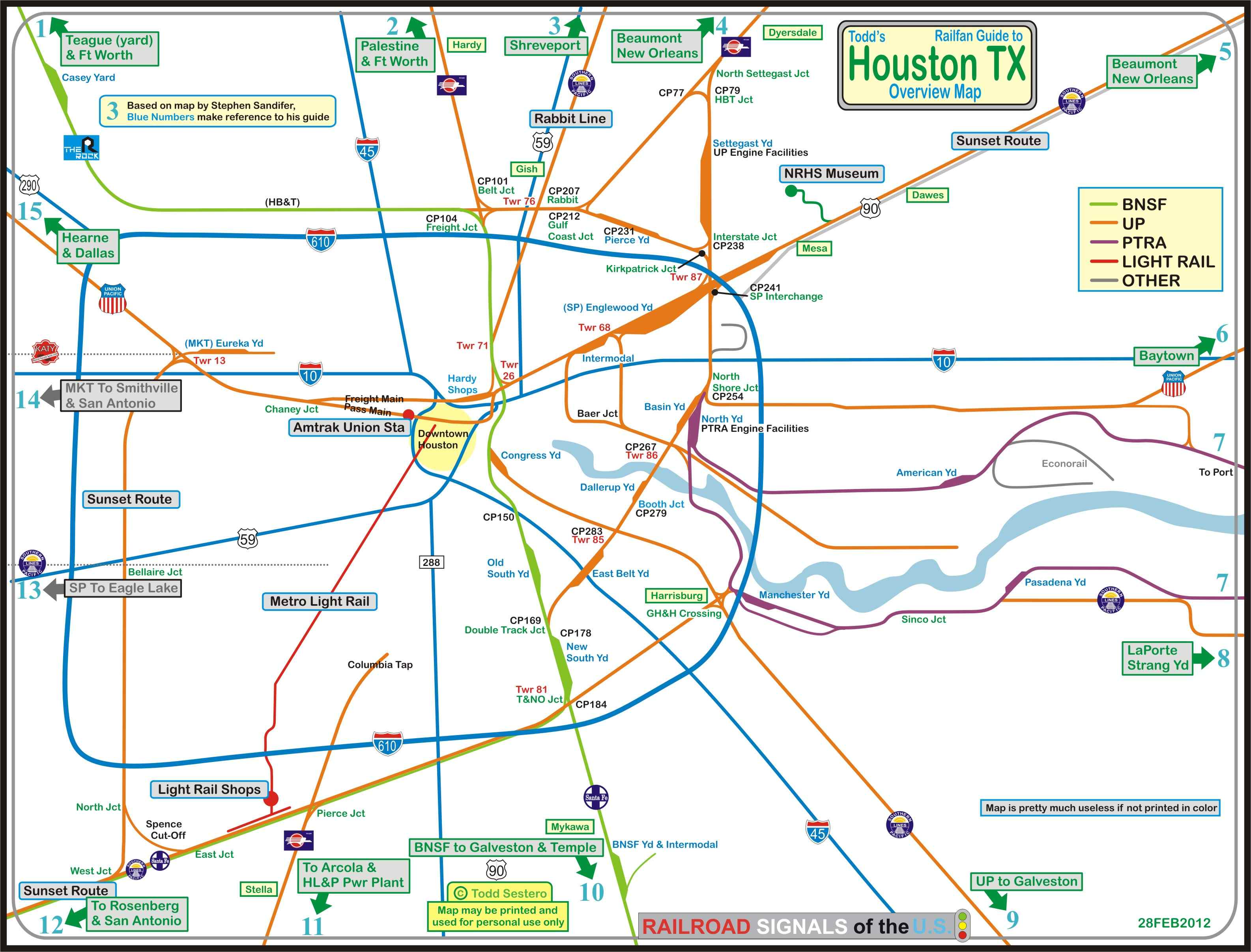
Please note, all of the information
below from a page/screen capture in 2011, so I do not know how much of this information is still relevant.
This is all the work of Steve Sandifer. The numbers make reference to
the numbers in the map above, which are also the same numbers Steve used.
Things have changed a lot in the wake of all of the UP and BNSF mergers, this
includes trackage rights. Also in wake of these changes is the renaming of
key points from "Tower 85" or "T&NO Junction", to
Control Points (common where I live "up here" in Conrail land. :-)
Here is a short list of places to watch activity from, outside the immediate Houston metro area:
Temple/Somerville, northwest of Houston -- BNSF
Rosenburg, Tower 17 -- BNSF
Hearne, Valley Junction -- UP
Conroe -- UP
So let's get into those line descriptions......
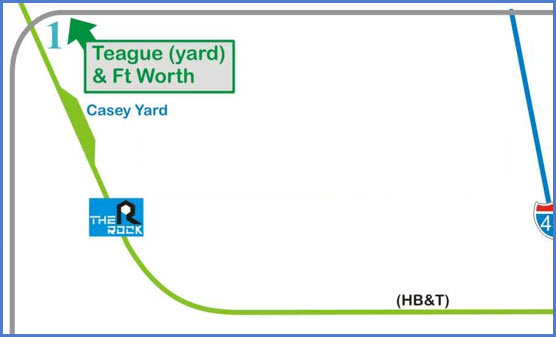
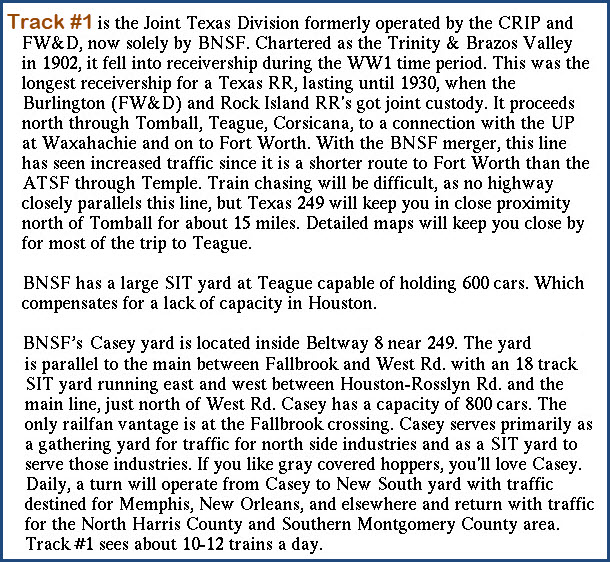
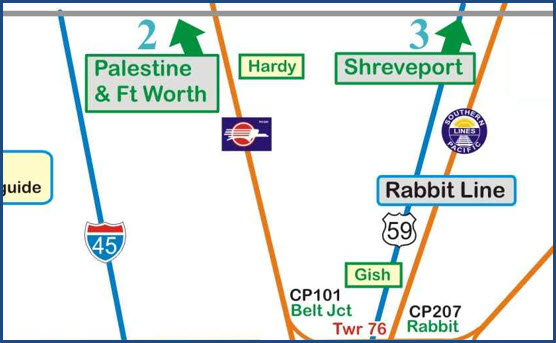
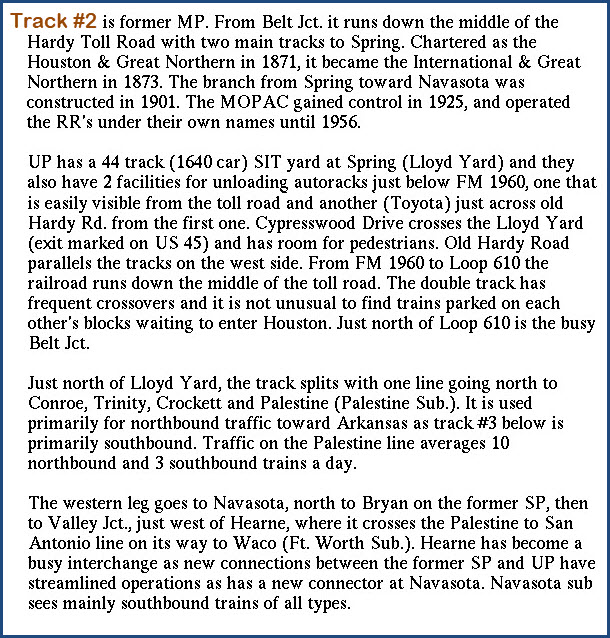
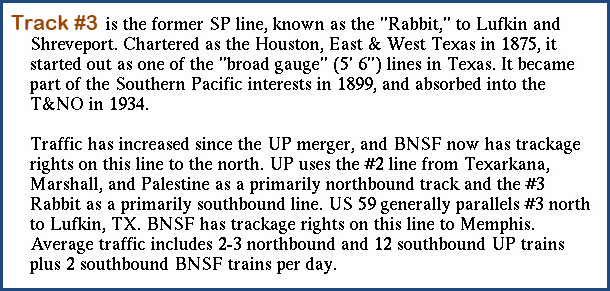
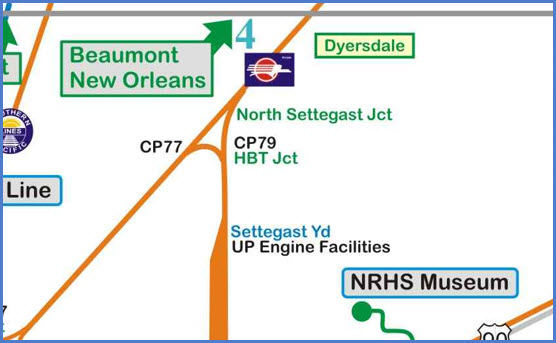
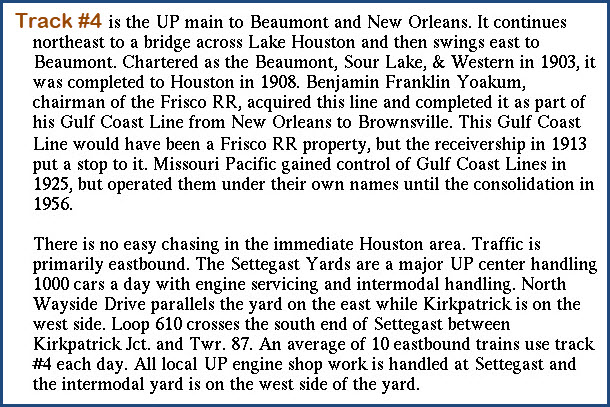
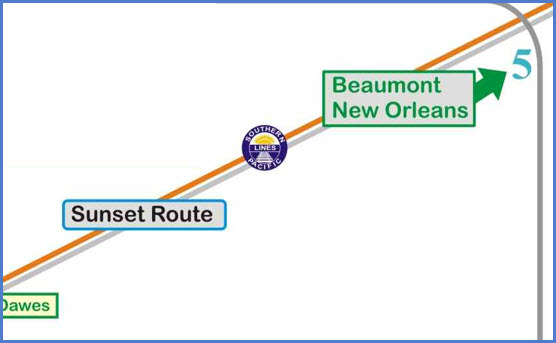
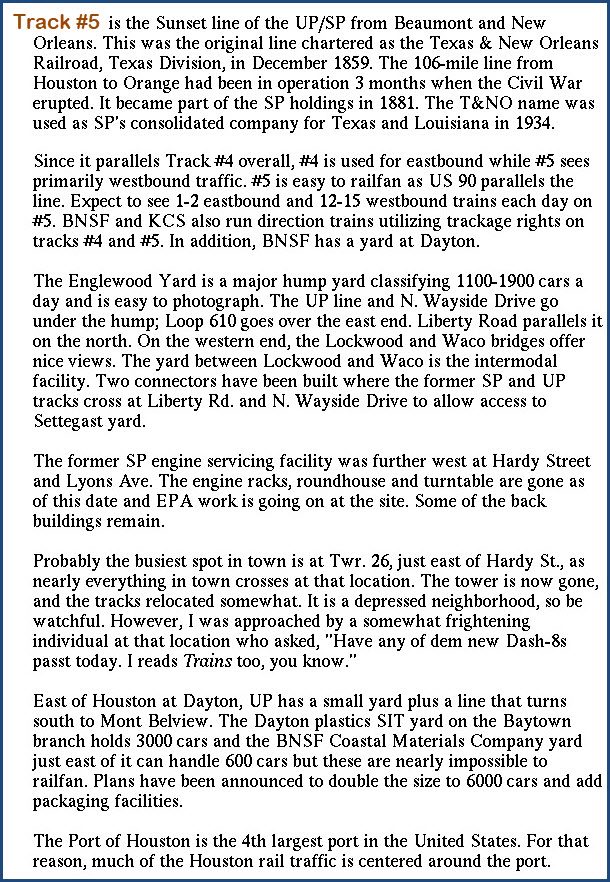
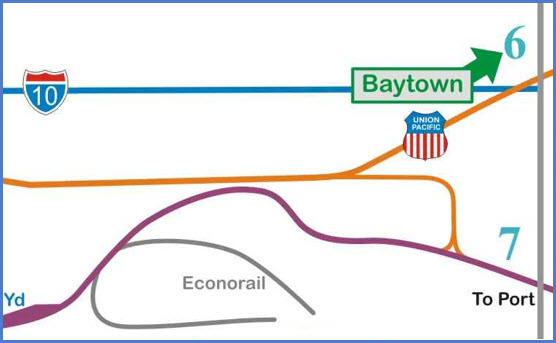

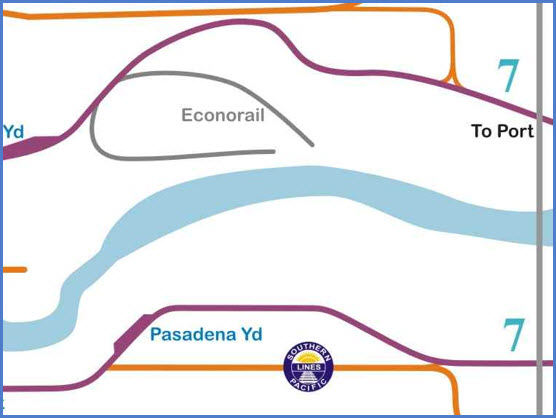
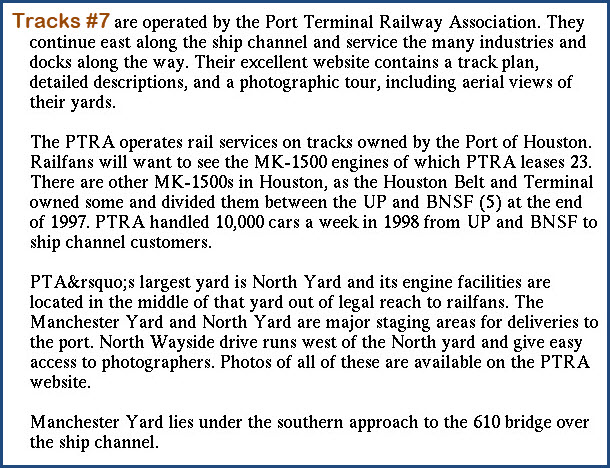
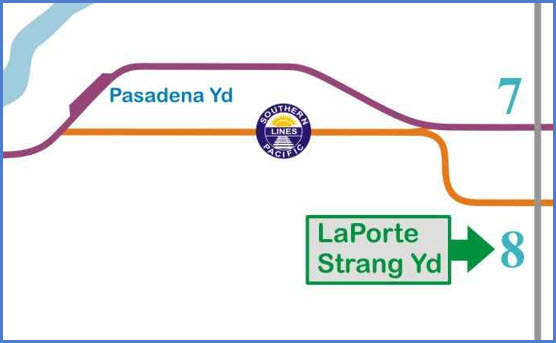
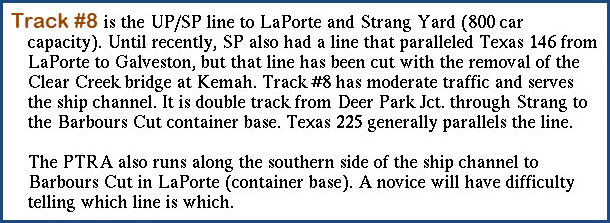
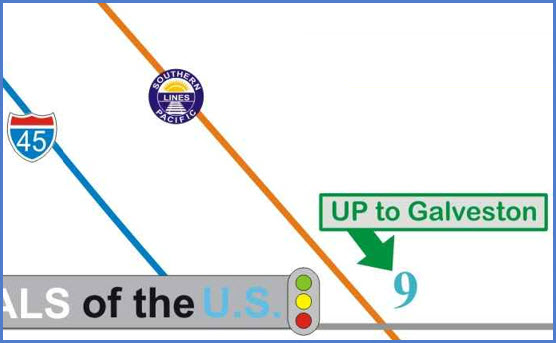

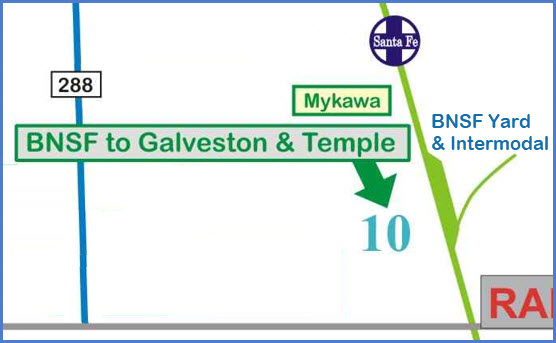
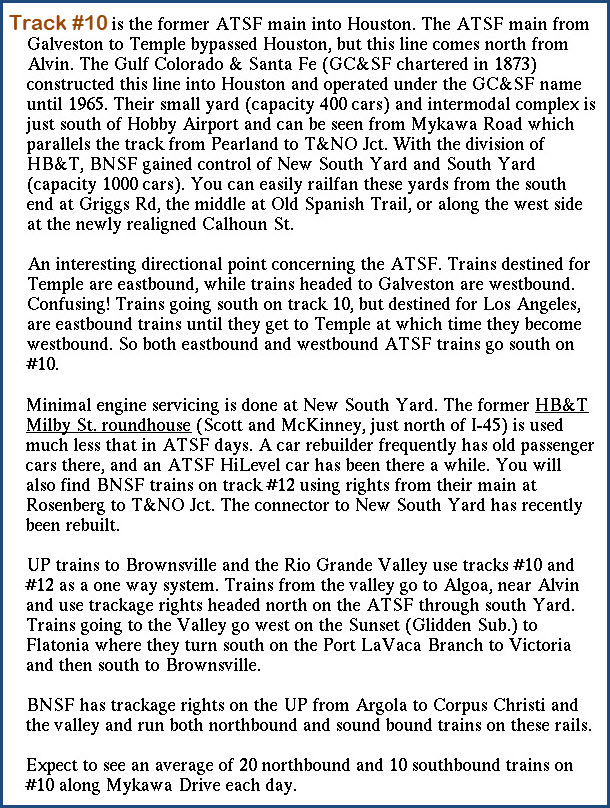
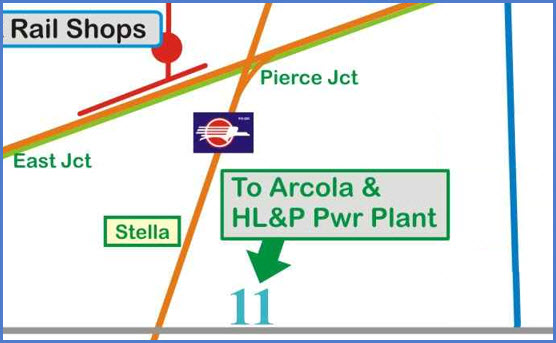
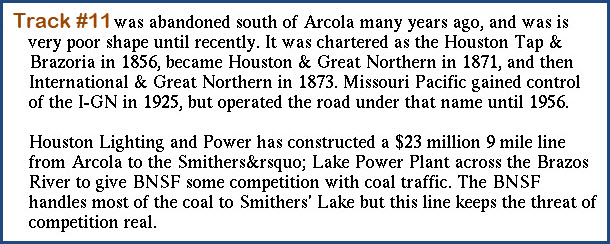
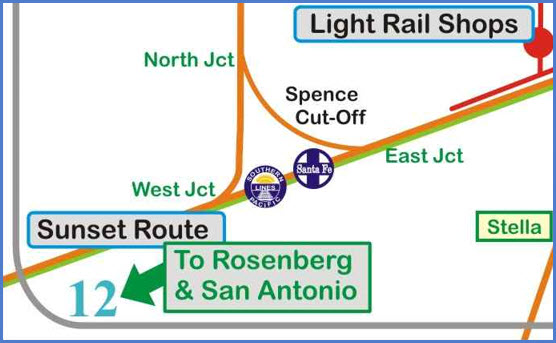
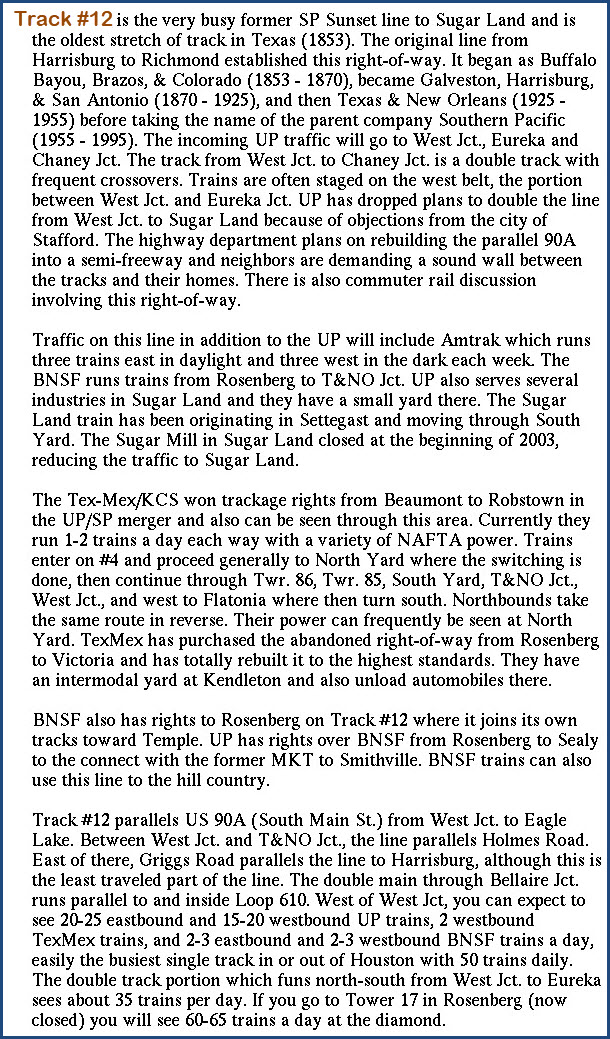
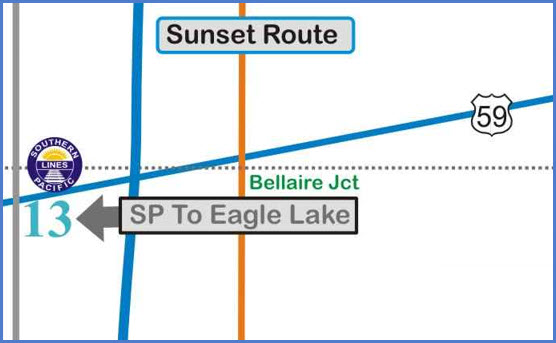

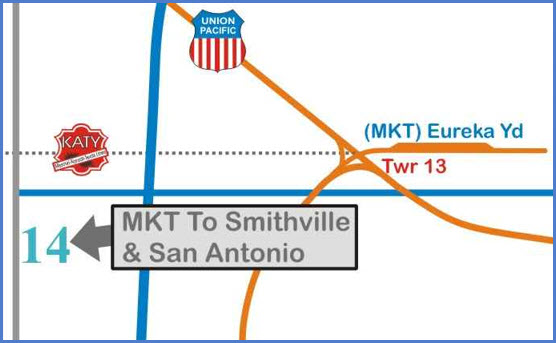
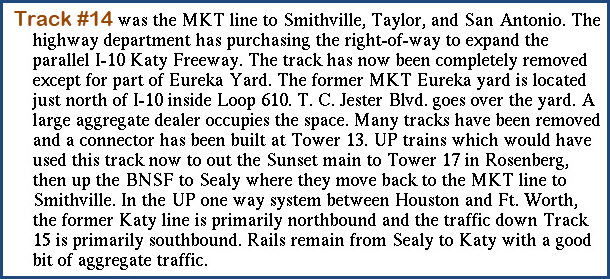
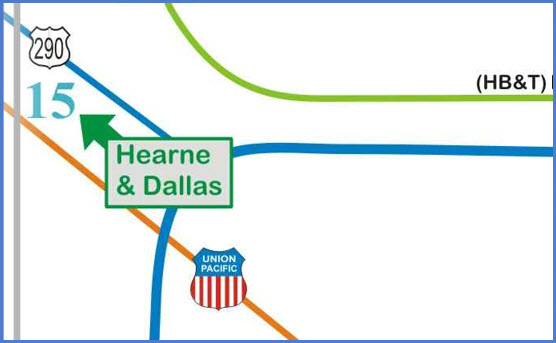

Two routes in and out of Houston have
disappeared as a result of the "mega mergers".
One is the old MKT line that headed west to San Antonio from Tower
13. Eureka Yard to the east of Tower 13 is an ex MKT yard.
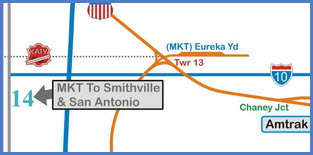
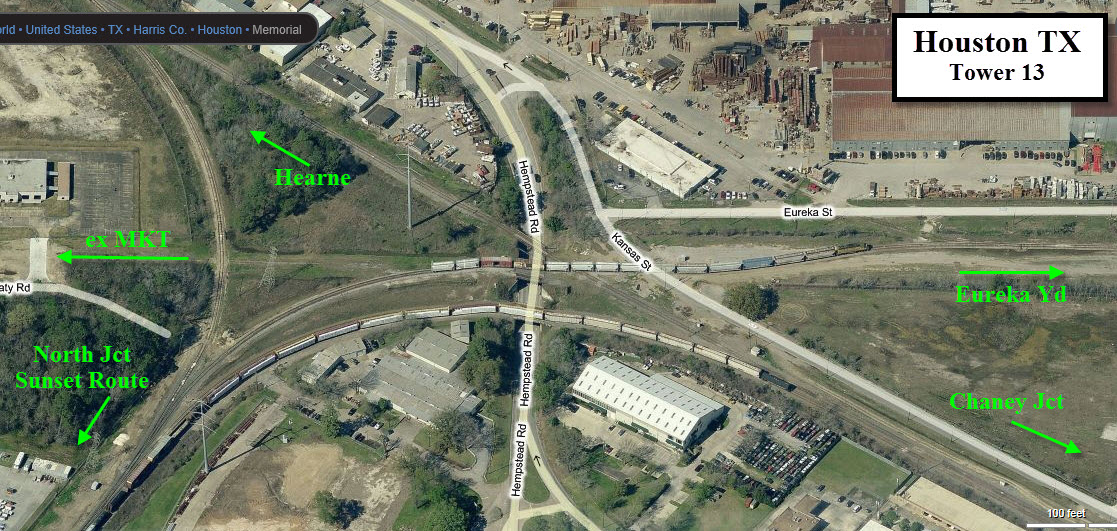
The other line is the ex Southern Pacific line heading west from Bellaire Junction to Eagle
Lake. As can be seen from the photo below, evidence of the interchange tracks can
still be seen, from "up here" and from ground level.
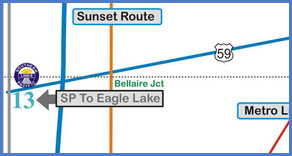
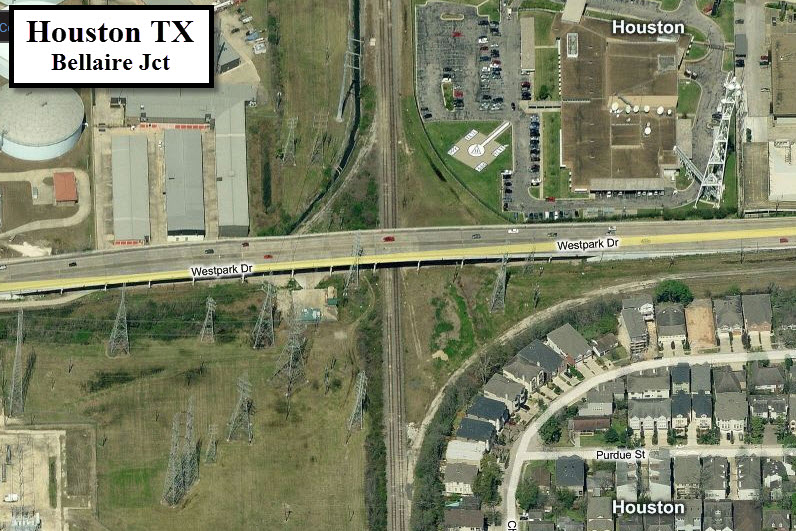
What is a SIT Yard?
In the descriptions above, you will notice SIT Yard is used quite often, for
those of you not familiar with the term, here is a discussion from way back in
2006 about them, and curiously enough, it was in relation to a "Houston" Yard:
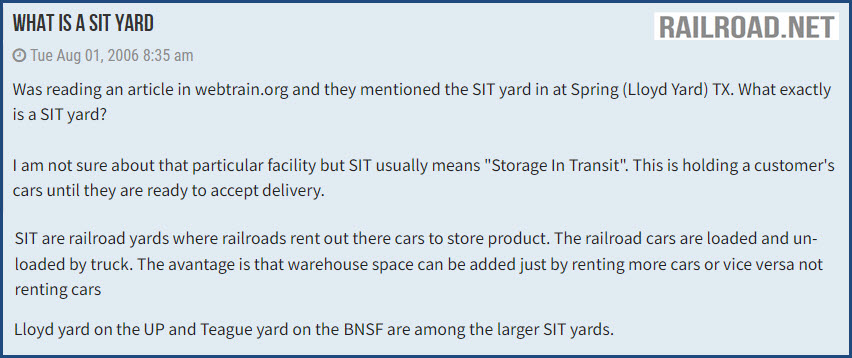
Additionally, I came across this from Viper:
If you are managing a railcar fleet involving loaded product, you’ve probably thought
about the idea of storing your product offsite; either close to your manufacturing
facility, or strategically placed, close to a particular consignee/customer. Using a
Railcar SIT Yard proves to be a cost effective resource, and accomplishes, next
level, service objectives.
As an expert in managing this process, Viper Rail Car Storage has established
SIT-Ready storage sites around the country; with service options for every major
Class 1 Railroad. This SIT process has been described as “a warehouse on wheels.”
Viper sees this strategy most commonly used, but not limited to the Plastic Resin Industry.
Various manufactures have their own niche market in this industry. Commonly, Plastic
Pellets are made in larger batches to keep manufacturing cost effective. Once plastic
pellets are made, they are loaded into a Hopper railcar. Once full, these Hoppers
are transported to a storage-in-transit (SIT) yard. This storage relieves the plastic
resin manufacturer or bagging facility from the costs of maintaining their onsite inventory.
Railcars in SIT Yards are more likely to go into a railcar storage yard closer to the
shipper than the consignee/customer. Most SIT yards are viewed as the manufacturers
offsite warehouse; not so much for the convenience of the consignee. Although there
is a growing number of manufactures that are using SIT yards to strategically place
their railcars into specific storage yards, close to their customer or usage point.
The Process of SIT: The shipper pays for movement, to send their railcars to the
SIT yard (this includes a Switch-In charge – and a Switch-Out charge when the railcars
leave). Railcars can be stored for as long as needed. Once product is sold, and billing
for the railcars is applied, the manufacture or consignee will pay a revenue move from
the SIT yard to the consignee/customer. At that point, Viper Railcar Storage will
facilitate the movement of the customer SIT railcars; to be shipped to their destination.
SIT storage yards car play a vital role in service. In a thriving market railcars may
be moving often enough, that storage may be short-lived. In a stagnate or depressed
market SIT yards may allow for a more detailed plan of attack; in how you function
as a manufacture. Throughout any given time of the year there are demand variations
for specific products. If the market demand is up, or depressed, your own variables
will ultimately determine if a SIT yard is right for you.
BNSF Teague Yard
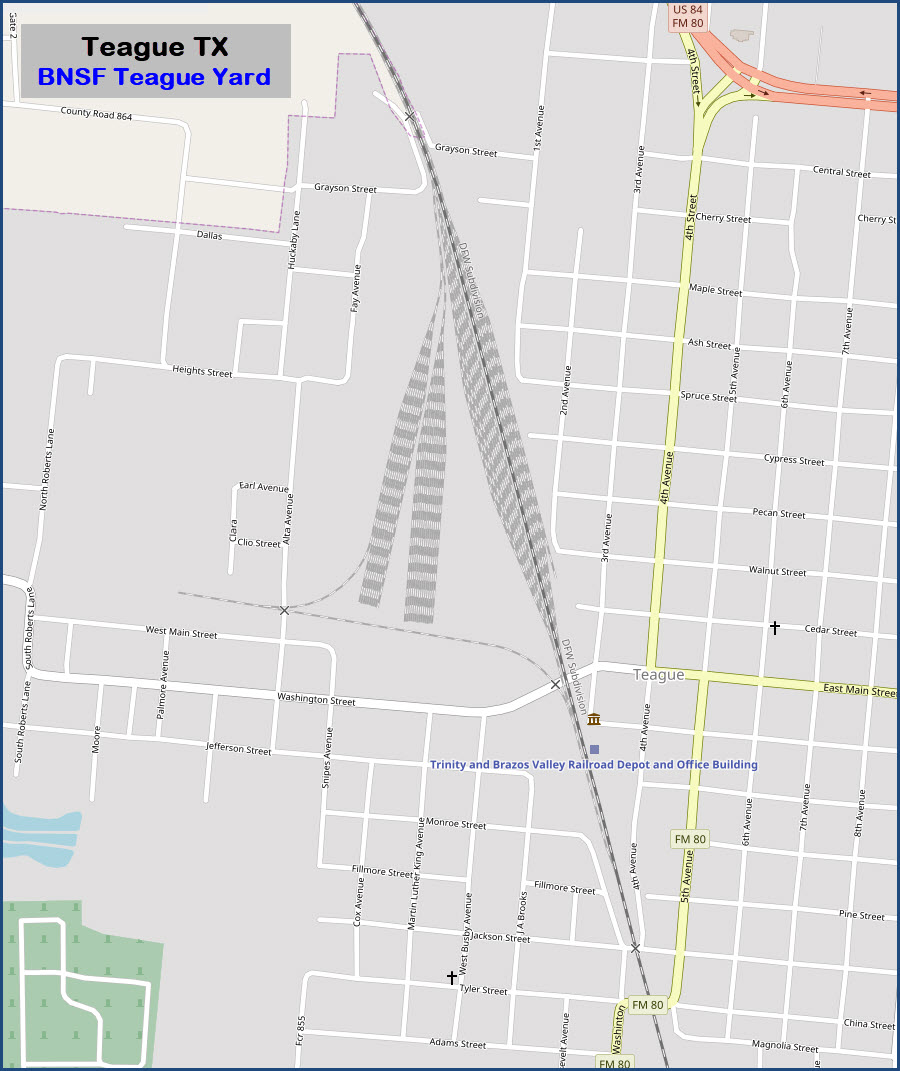
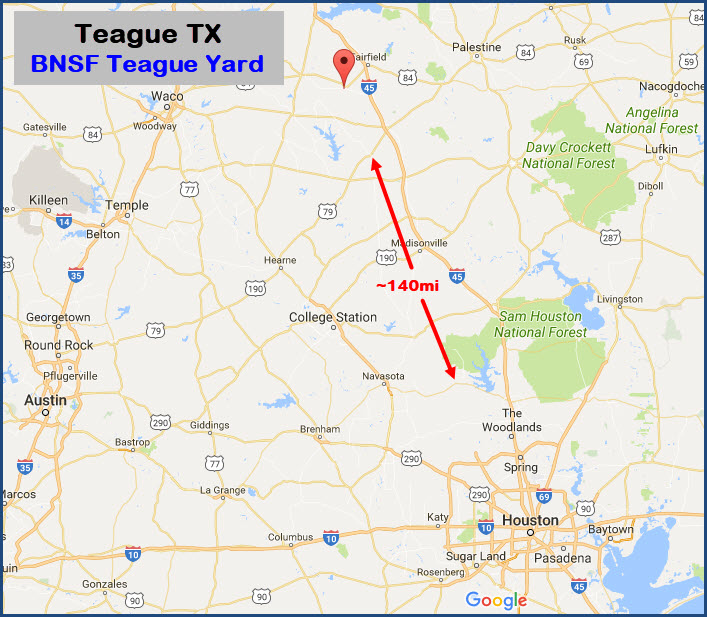
Disclaimers:
I love trains, and I love signals. I am not an expert. My webpages reflect what I find on the topic of the page. This is something I have fun with while
trying to help others.
Please Note: Since the main focus of my two websites is railroad signals, the railfan guides are oriented towards the signal fan being able to locate them.
For those of you into the modeling aspect of our hobby, my
indexa page has a list of almost everything railroad oriented
I can think of to provide you with at least a few pictures to help you detail your pike.
If this is a railfan page, every effort has been made to make sure that the information contained on this map and in this railfan guide is correct. Once in a while,
an error may creep in :-)
My philosophy: Pictures and maps are worth a thousand words, especially for railfanning. Text descriptions only get you so far, especially if you get lost or
disoriented. Take along good maps.... a GPS is OK to get somewhere, but maps are still better if you get lost! I belong to AAA, which allows you to get
local maps for free when you visit the local branches. ADC puts out a nice series of county maps for the Washington DC area, but their state maps do not have the
railroads on them. If you can find em, I like the National Geographic map book of the U.S..... good, clear, and concise graphics, and they do a really good job
of showing you where tourist type attractions are, although they too lack the railroads. Other notes about specific areas will show up on that page if known.
Aerial shots were taken from either Google or Bing Maps as noted. Screen captures are made
with Snagit, a Techsmith product... a great tool if you have never used it!
By the way, floobydust is a term I picked up 30-40 years ago from a National Semiconductor data book, and means miscellaneous
and/or other stuff.
Pictures and additional information is always needed if anyone feels inclined to take 'em, send 'em, and share 'em, or if you have something to add or correct.... credit
is always given! Please be NICE!!! Contact info is here
Beware: If used as a source, ANYTHING from Wikipedia must be treated as being possibly inaccurate, wrong, or not true.
RAILFAN GUIDES HOME
RAILROAD SIGNALS HOME
New: 12/02/2007, JUN05/2022
Last Modified: 06-Jun-2022